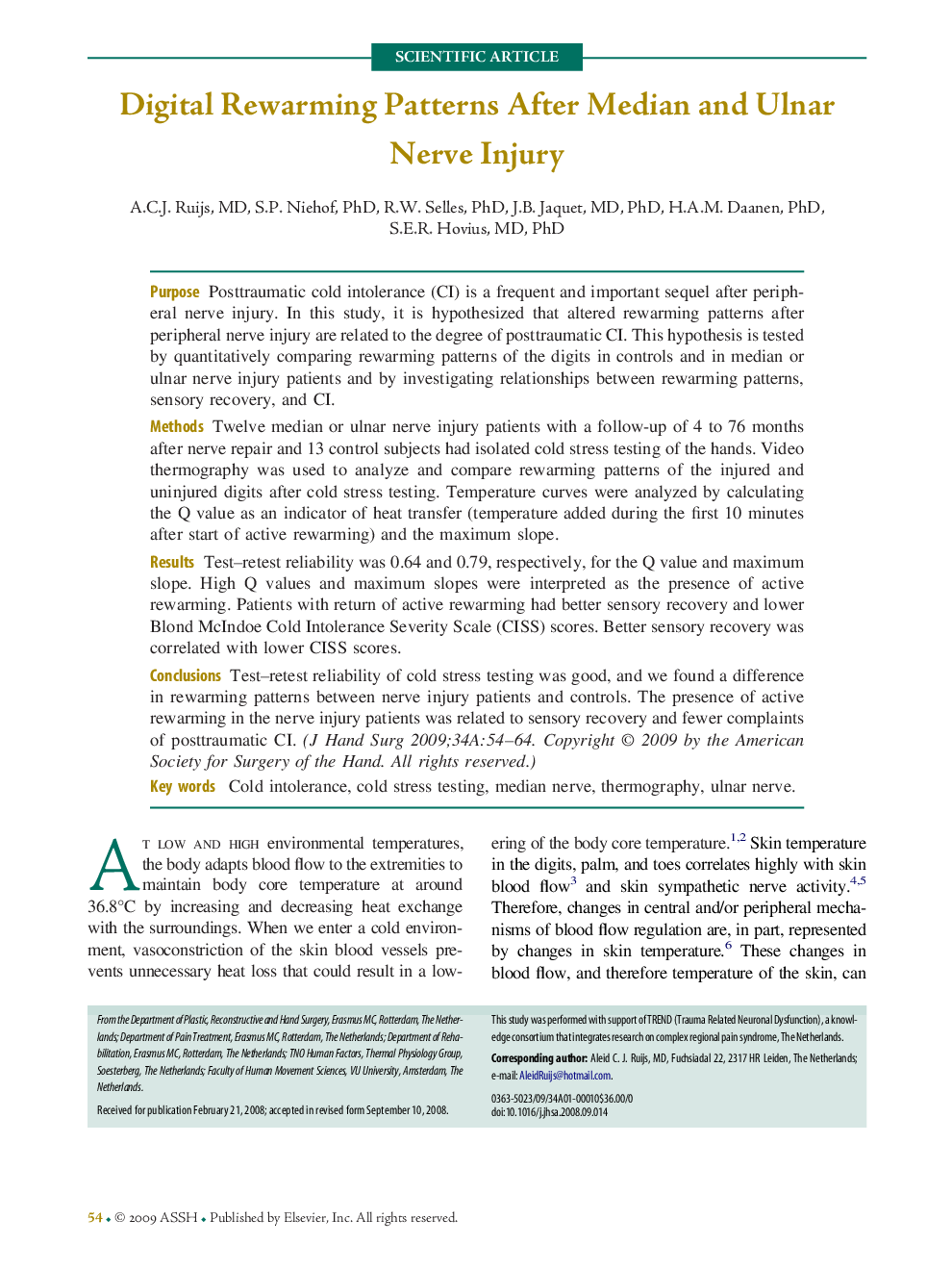| Article ID | Journal | Published Year | Pages | File Type |
|---|---|---|---|---|
| 4069309 | The Journal of Hand Surgery | 2009 | 11 Pages |
PurposePosttraumatic cold intolerance (CI) is a frequent and important sequel after peripheral nerve injury. In this study, it is hypothesized that altered rewarming patterns after peripheral nerve injury are related to the degree of posttraumatic CI. This hypothesis is tested by quantitatively comparing rewarming patterns of the digits in controls and in median or ulnar nerve injury patients and by investigating relationships between rewarming patterns, sensory recovery, and CI.MethodsTwelve median or ulnar nerve injury patients with a follow-up of 4 to 76 months after nerve repair and 13 control subjects had isolated cold stress testing of the hands. Video thermography was used to analyze and compare rewarming patterns of the injured and uninjured digits after cold stress testing. Temperature curves were analyzed by calculating the Q value as an indicator of heat transfer (temperature added during the first 10 minutes after start of active rewarming) and the maximum slope.ResultsTest–retest reliability was 0.64 and 0.79, respectively, for the Q value and maximum slope. High Q values and maximum slopes were interpreted as the presence of active rewarming. Patients with return of active rewarming had better sensory recovery and lower Blond McIndoe Cold Intolerance Severity Scale (CISS) scores. Better sensory recovery was correlated with lower CISS scores.ConclusionsTest–retest reliability of cold stress testing was good, and we found a difference in rewarming patterns between nerve injury patients and controls. The presence of active rewarming in the nerve injury patients was related to sensory recovery and fewer complaints of posttraumatic CI.
